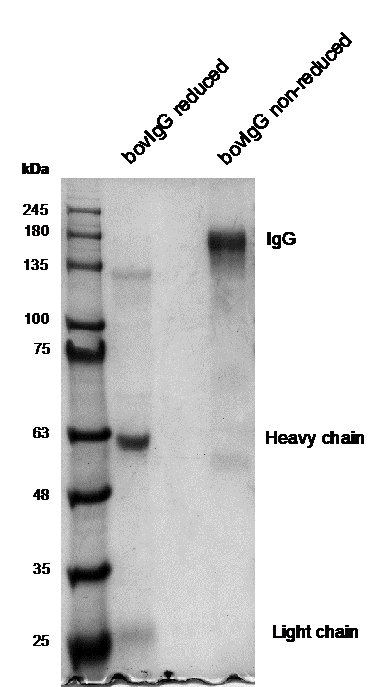
Cat. #154739
Anti-Integrin a-3A [158A3]
Cat. #: 154739
Sub-type: Primary antibody
Unit size: 100 ug
Target: Integrin a3A
Class: Monoclonal
Application: IHC ; WB
Reactivity: Dog ; Human
Host: Mouse
£300.00
This fee is applicable only for non-profit organisations. If you are a for-profit organisation or a researcher working on commercially-sponsored academic research, you will need to contact our licensing team for a commercial use license.
Contributor
Inventor: Arnoud Sonnenberg
Institute: Netherlands Cancer Institute
Tool Details
*FOR RESEARCH USE ONLY (for other uses, please contact the licensing team)
- Name: Anti-Integrin a-3A [158A3]
- Alternate name: ITGA3; Antigen CD49C
- Research fields: Cell biology;Cell signaling and signal transduction
- Tool sub type: Primary antibody
- Class: Monoclonal
- Conjugation: Unconjugated
- Strain: Balb/c
- Reactivity: Dog ; Human
- Host: Mouse
- Application: IHC ; WB
- Description: ITGA3 is an integrin alpha subunit. Together with beta-1 subunit, it makes up half of the ÄÂ?3ÄÂ?1 integrin duplex that plays a role in neural migration and corticogenesis, acted upon by such factors as netrin-1 and reelin.
- Immunogen: A mouse was immunized with a synthetic peptide corresponding to the cytoplasmic domain of the integrin subunit a3A including an additional N-terminal cysteine (CRTRALYEAKRQKAEMKSQPSETERLTDDY) coupled to keyhole limpet hemocyanin.
- Isotype: IgG2a
- Myeloma used: Sp2/0-Ag14
Target Details
- Target: Integrin a3A
- Target background: ITGA3 is an integrin alpha subunit. Together with beta-1 subunit, it makes up half of the a3?1 integrin duplex that plays a role in neural migration and corticogenesis, acted upon by such factors as netrin-1 and reelin.
Applications
- Application: IHC ; WB
Handling
- Format: Liquid
- Concentration: 0.9-1.1 mg/ml
- Unit size: 100 ug
- Storage buffer: PBS with 0.02% azide
- Storage conditions: -15° C to -25° C
- Shipping conditions: Shipping at 4° C
References
- de Melker et al. 1997. Lab Invest. 76(4):547-63. PMID: 9111516.
- Delwel et al. 1994. Mol Biol Cell. 5(2):203-15. PMID: 8019006.


